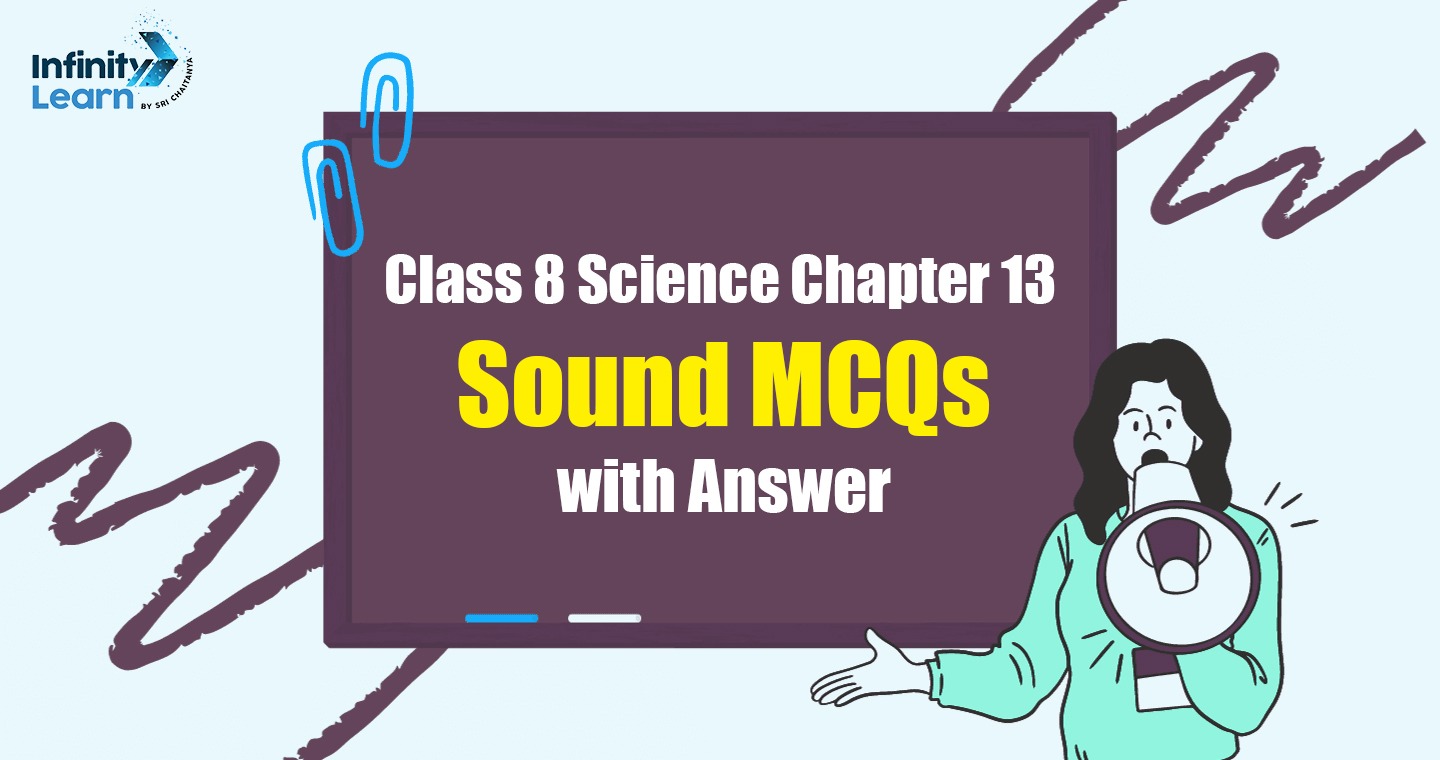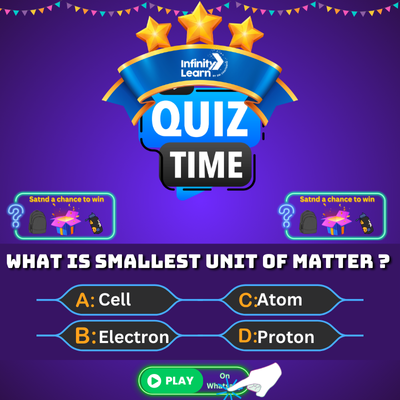Table of Contents
Sound Class 8 MCQ: Looking to sharpen your understanding of CBSE Class 8 Science Chapter 13 — Sound? Practicing MCQ questions for Class 8 Science with answers is a smart way to test your knowledge and improve your exam readiness. These CBSE Class 8 Science Sound MCQ questions are designed as per the latest CBSE syllabus and are useful for students from CBSE, KVS, and other boards.
Whether you are revising concepts or preparing for class tests, these multiple-choice questions offer quick practice, clear answers, and strong concept clarity, making your science learning easy and effective.

CBSE Class 8 Science Chapter 13 Sound – Overview
CBSE Class 8 Science Chapter 13 – Sound introduces students to the fascinating world of sound, its production, properties, and behavior. This chapter explains important concepts like how sound is produced, how it travels through different mediums, the characteristics of sound waves (frequency, amplitude, and time period), the speed of sound in solids, liquids, and gases, and the difference between musical sound and noise. Students also learn about audible and inaudible sounds, vibration, echo, reverberation, and the human ear’s structure and working.
This chapter is very important for exams as it helps build a strong foundation for higher classes, and questions from this chapter usually carry 2 to 3 marks in short answers and 5 marks in long answers in CBSE exams.
To make learning easier and to strengthen understanding, we have provided a set of well-prepared MCQ questions for Class 8 Science Chapter 9 Sound with answers. These MCQs will help students revise key concepts, improve their problem-solving speed, and prepare confidently for class tests and final exams.
Also Check: NCERT Solutions for Class 8 Science Chapter 13 | Sound Class 8 Notes
MCQ Questions for CBSE Class 8 Science Chapter 13 – Sound
1. Sound is produced by:
A) Still objects
B) Vibrating bodies
C) Moving air only
D) Light waves
Answer: B) Vibrating bodies
2. The back-and-forth motion of an object producing sound is called:
A) Revolution
B) Oscillation
C) Vibration
D) Rotation
Answer: C) Vibration
3. The medium through which sound travels fastest is:
A) Air
B) Vacuum
C) Water
D) Steel
Answer: D) Steel
4. Sound cannot travel through:
A) Solids
B) Liquids
C) Vacuum
D) Gases
Answer: C) Vacuum
5. The number of vibrations per second is called:
A) Pitch
B) Amplitude
C) Frequency
D) Wavelength
Answer: C) Frequency
6. The unit of frequency is:
A) Decibel
B) Hertz
C) Newton
D) Joule
Answer: B) Hertz
7. Loudness of sound is determined by:
A) Frequency
B) Amplitude
C) Speed
D) Wavelength
Answer: B) Amplitude
8. Which part of the human ear collects sound waves?
A) Cochlea
B) Eardrum
C) Pinna
D) Auditory nerve
Answer: C) Pinna
9. Sound waves are:
A) Transverse waves
B) Longitudinal waves
C) Circular waves
D) Random waves
Answer: B) Longitudinal waves
10. The speed of sound in air is approximately:
A) 330 m/s
B) 1500 m/s
C) 5000 m/s
D) 3 x 10^8 m/s
Answer: A) 330 m/s
11. A sound wave that is too high for humans to hear is called:
A) Infrasound
B) Ultrasound
C) Noise
D) Echo
Answer: B) Ultrasound
12. The human ear can normally hear sounds between:
A) 20 Hz to 20,000 Hz
B) 100 Hz to 50,000 Hz
C) 200 Hz to 5,000 Hz
D) 1 Hz to 10 Hz
Answer: A) 20 Hz to 20,000 Hz
13. The time taken to complete one vibration is called:
A) Speed
B) Wavelength
C) Period
D) Frequency
Answer: C) Period
14. Sound waves require a ________ to travel:
A) Medium
B) Battery
C) Light source
D) Circuit
Answer: A) Medium
15. The sensation of sound stops as soon as the vibration:
A) Starts
B) Continues
C) Stops
D) Becomes faster
Answer: C) Stops
16. In humans, the part responsible for sending sound signals to the brain is:
A) Pinna
B) Eardrum
C) Cochlea
D) Vocal cords
Answer: C) Cochlea
17. When sound bounces off a surface and returns, it is called:
A) Diffusion
B) Echo
C) Refraction
D) Absorption
Answer: B) Echo
18. The maximum disturbance from the rest position in a sound wave is called:
A) Frequency
B) Wavelength
C) Amplitude
D) Time period
Answer: C) Amplitude
19. The pitch of a sound depends on:
A) Frequency
B) Speed
C) Medium
D) Amplitude
Answer: A) Frequency
20. The softest sound a human can hear is called:
A) Threshold of hearing
B) Decibel limit
C) Ultrasound
D) Background noise
Answer: A) Threshold of hearing
21. Which one of these is not a characteristic of sound?
A) Loudness
B) Pitch
C) Frequency
D) Weight
Answer: D) Weight
22. The sound produced by a tuning fork is:
A) Random noise
B) Musical and clear
C) Electrical sound
D) No sound at all
Answer: B) Musical and clear
23. The sound produced by humans is created by:
A) Eardrum
B) Vocal cords
C) Heartbeat
D) Windpipe
Answer: B) Vocal cords
24. The repeated reflection of sound in a large hall leads to:
A) Noise
B) Reverberation
C) Echo
D) Refraction
Answer: B) Reverberation
25. The unit used to measure sound intensity is:
A) Decibel (dB)
B) Newton
C) Hertz
D) Joule
Answer: A) Decibel (dB)
26. In outer space, astronauts cannot hear sounds because:
A) The space suits block sound
B) There is no medium for sound to travel
C) Their radios are off
D) Sound moves too fast
Answer: B) There is no medium for sound to travel
27. Sound waves carry:
A) Light energy
B) Magnetic energy
C) Mechanical energy
D) Electrical energy
Answer: C) Mechanical energy
28. What causes the sound of thunder to be heard after lightning is seen?
A) Sound moves slower than light
B) Light moves slower than sound
C) Sound does not travel
D) Sound and light travel at the same speed
Answer: A) Sound moves slower than light
29. Which property of sound makes it possible to recognize a person’s voice?
A) Pitch
B) Loudness
C) Quality or Timbre
D) Frequency
Answer: C) Quality or Timbre
30. Sound waves travel through air by:
A) Electric currents
B) Light pulses
C) Vibrations of air particles
D) Magnetic fields
Answer: C) Vibrations of air particles




